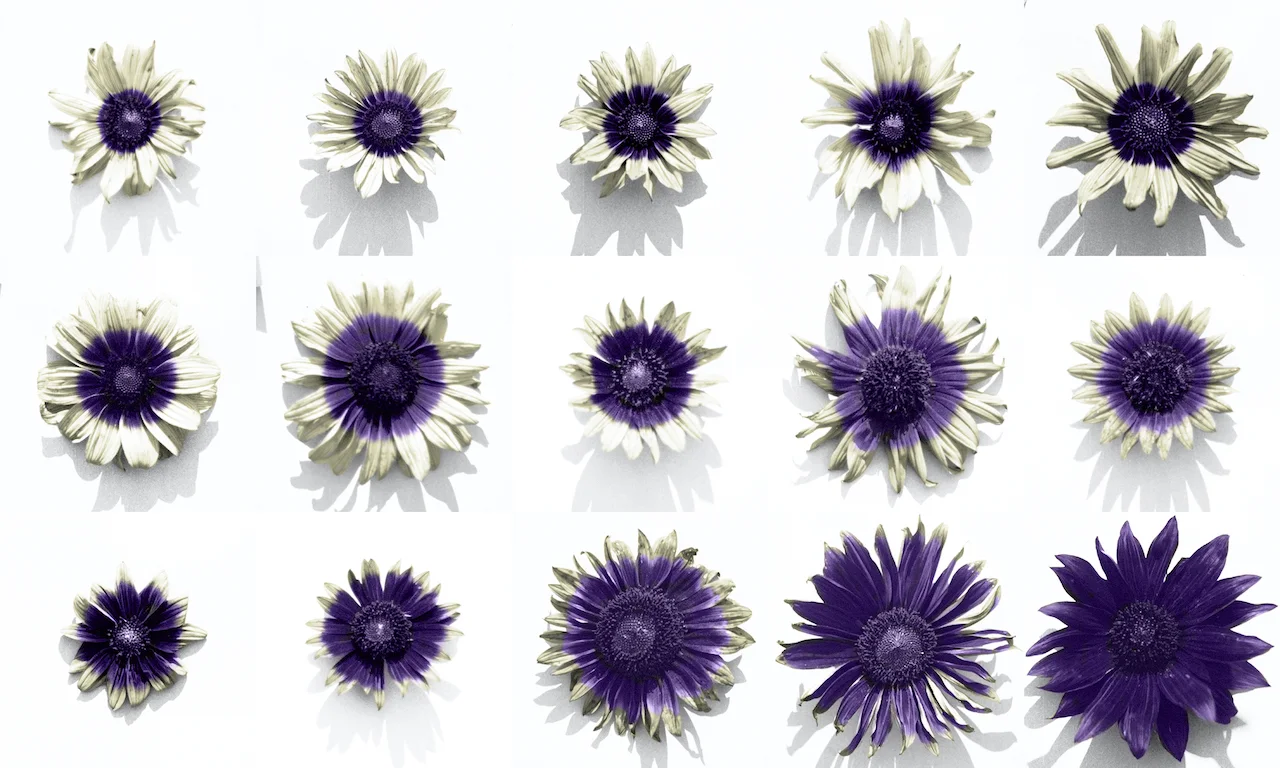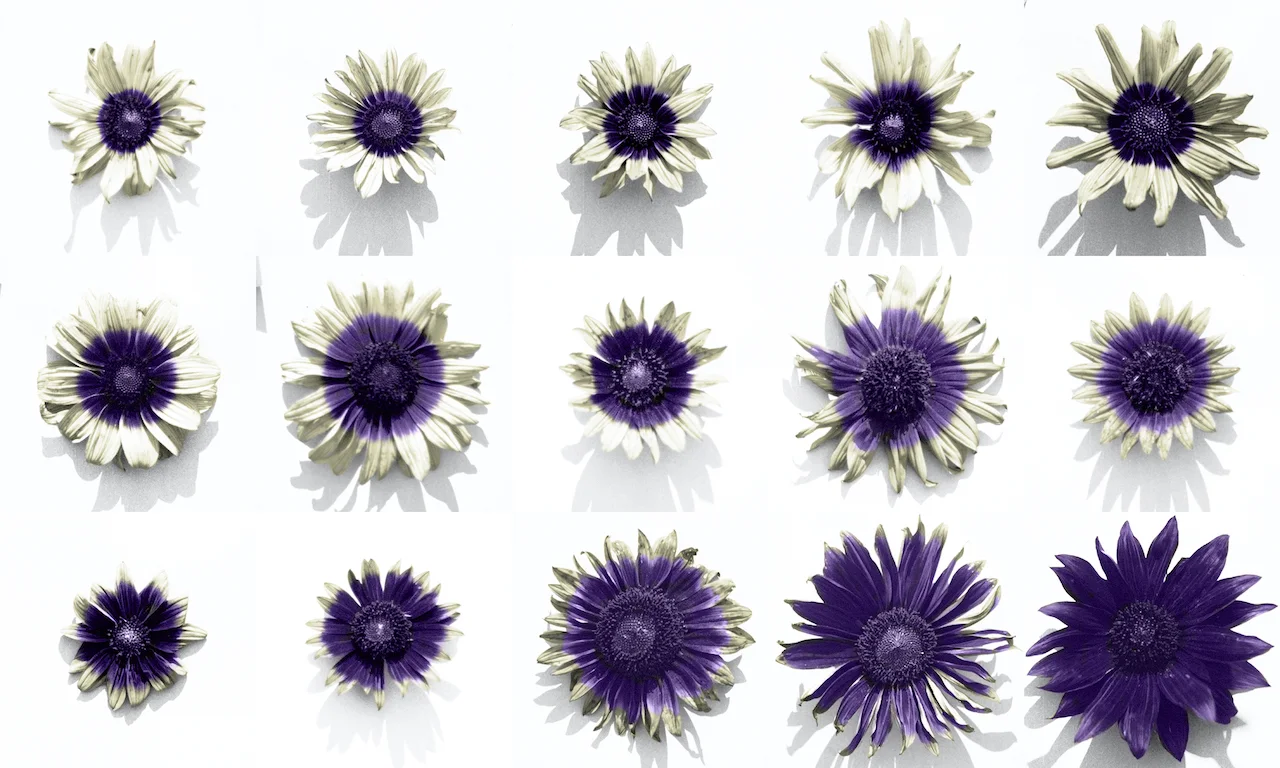
Sunflowers ward off drought and heat through their invisible colours
New research from the University of British Columbia (UBC) shows the same molecules that produce the ultraviolet bull’s-eye patterns in sunflowers can help the plants adapt to stresses such as drought or extreme temperatures.
Sunflowers are aptly named for their appearance, but they are certainly capable of doing more than just lifting someone's spirits.
New research from the University of British Columbia (UBC) shows the ultraviolet (UV) colours of sunflowers can help them mitigate water loss, in addition to attracting pollinators.
SEE ALSO: Pollinator Park: What a world without pollinators could look like
The flower’s group of thick petals contain a UV bull’s-eye pattern invisible to humans but can be seen by insects including bees. While it's been long established the designs are known to enhance the appeal of the pollinators by expanding their visibility, new analysis shows the same molecules that generate the UV patterns in sunflowers can assist the plants in adapting to stresses such as drought or extreme temperatures.
The data is part of a new paper published recently in eLife, possibly giving hints to how plants can adjust to different climates.
“Unexpectedly, we noticed that sunflowers growing in drier climates had flowers with larger UV bull's-eyes, and found that those flowers are able to retain water more efficiently. This suggests that these larger UV bull's-eyes help plants adapt to these drier environments,” said lead author Marco Todesco, a research associate at UBC’s biodiversity research centre and department of botany, in a news release.

Sunflowers with UV bull's-eyes in false colour. (Marco Todesco)
WILD SUNFLOWERS' BULL'S-EYES VARY IN SIZES
Almost 2,000 wild sunflowers of two species were grown at the university in 2016 and 2019. The UV designs of the plants were measured and their genomes were examined. As a result, researchers discovered that wild sunflowers in different parts of North America had UV bull's-eyes of varying sizes.
For example, in some, the bull's-eye was a thin ring, while in others it covered the whole flower. Bigger bull's-eyes were visited more often by bees, backing prior research of other plant species.
A single gene, HaMYB111, is credited with most of the diversity in floral UV patterns. As such, sunflowers can survive under environmental tensions such as dry or hot conditions with the help of the gene, which controls production of UV-absorbing flavonol compounds.

(Marco Todesco)
According to the university, bigger floral UV patterns that have more of the compounds may help lower the amount of evaporation from a sunflower in environments with lesser humidity, thus averting substantial water loss.
WATCH: SUNFLOWERS PREFER TO FACE EAST, AND RESEARCHERS NOW KNOW WHY
In humid, hot environments, smaller UV designs would nurture the evaporation process instead, allowing for the plant to remain cool and avoiding overheating, the authors say.
“Floral UV patterns appear, therefore, to play at least a dual role in adaptation. Besides their well-known effect on enhancing pollination, they also regulate water loss from flowers,” said senior author Loren Rieseberg, a professor in the department of botany and the biodiversity research centre, in the news release.
As a result of fluorescence, flowers, in general, often look different after absorbing ultraviolet light and emitting longer wavelengths visible to the human eye.

RESEARCH COULD AID IN ATTRACTING MORE POLLINATORS
There are a number of reasons why sunflowers are fertilized, including for sunflower oil production -- estimated to be a US$20 billion-industry in 2020, according to the university. The UBC groundwork has the potential to further expand knowledge on how to attract pollinators, with the chance of increasing crop yields, Todesco stated.
“This work also helps us understand how sunflowers, and potentially other plants, better adapt to different areas or temperatures, which could be important in a warming climate," said Todesco.
In addition, researchers want to acquire a greater understanding of how HaMYB111 manages the size of UV bull's-eyes and review in more detail how the designs affect plant physiology, as well as investigate how flavonol compounds affect the loss of water.
Thumbnail courtesy of Marco Todesco.
Follow Nathan Howes on Twitter.










